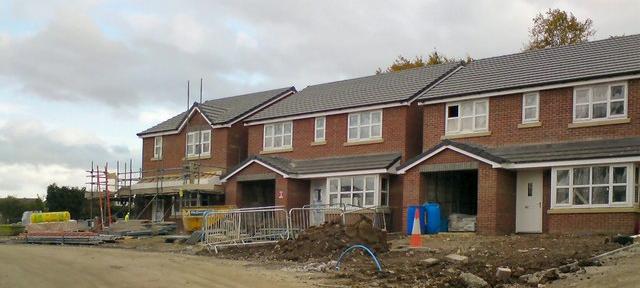
More Than Half a Million Homes in England Do Not Meet Basic Health and Safety Standards
Posted on July 18, 2017
More than half a million social homes in England fail to meet basic health and safety standards, an analysis of official government data by The Independent has revealed.
Just weeks after the Grenfell Tower fire raised serious questions about the state of housing in the UK, new statistics show that 525,000 social homes currently do not meet the national Decent Homes Standard – almost one in seven of all social homes in England.
Of these, 244,000 properties are deemed to have a category one safety hazard – the highest category of risk — which includes potentially fatal hazards such as exposed wiring, overloaded electricity sockets, dangerous boilers, leaking roofs, vermin infestations or inadequate security.
Local authorities have a legal duty to act if a category one hazard is discovered, but hundreds of thousands are going unreported or ignored.
In total, it means more than a million people are likely to be living in social homes that fail the Government’s own minimum benchmark for human habitation. Millions more are suffering the same fate in properties rented from private landlords.
The proportion of social homes that are sub-standard has barely fallen in recent years, as austerity policies mean government funding for housing improvements has dried up.
The new data comes from the government-commissioned English Housing Survey, which is published once a year and provides a snapshot of the state of housing.
It is likely to renew pressure on government ministers, local councils and housing associations to take action to improve the quality of social housing, especially in the wake of the Grenfell Tower disaster.
As urgent testing of building cladding and insulation is conducted by the Government and local authorities, The Independent’s analysis raises broader questions about the safety of social homes – even in properties where building regulations have been met and the correct materials used.
Particularly worrying after the Grenfell Tower fire, the number of homes in high-rise tower blocks that contain category one hazards has increased since 2013.
One in seven homes in purpose-built tower blocks currently fail the Government’s own benchmark for adequate housing.
Properties classed as “non-decent” must have failed on one or more measures: they either did not meet basic safety standards; are considered to be in state of disrepair; do not have modern bathroom and sanitation facilities, or lack adequate heating.
Last year, the biggest reason for social homes being classed as substandard was because they had a category one health and safety hazard. 244,000 homes were in this category – more than half of the social homes in England deemed to be inadequate.
The Decent Homes Standard is just one measure of the quality of social housing. A property could have a host of other problems while not necessarily failing to meet the benchmark.
Four criteria are used to assess whether a property is classed as being in “poor condition”, of which the Decent Homes Standard is just one, and the category one hazard test another. The two other tests relate to disrepair and damp.
In England, 364,000 social homes are classed as being in a state of “substantial disrepair”, while 205,000 have damp in one or more rooms.
Shockingly, 89,000 social homes failed on either three or four of the four measures of poor-quality housing.
Between 2001 and 2010, as part of a huge programme of investment, an estimated £37bn was spent on improving social homes, of which at least £22bn was provided by the Department for Communities and Local Government (DCLG) via the Decent Homes Programme, established in 2001.
As a result, the number of social homes classed as non-decent fell by more than a million – from 39 per cent of all social homes in 2001, to 15 per cent in 2012.
In contrast, funding has been scarce since 2011. The Coalition government committed just £1.6bn to the Decent Homes Programme between 2011 and 2015, and the Government has now stopped funding the programme entirely.
The proportion of social homes classed as non-decent fell by just two per cent from 2012 to 2016: from 15 per cent to 13 per cent.
The Government now says councils “should have the resources to keep all their social housing at a decent level” without central funding.
But Labour said it was “shameful” that ministers have stopped funding the Decent Homes Programme when so many properties remain in a sub-standard condition.
John Healey, the party’s Shadow Housing Secretary, told The Independent: “When over half a million social homes can’t be classed as decent, it’s shameful that ministers have axed all funding for the Decent Homes Programme to upgrade social housing. Under Labour, we invested more than £22bn to bring more than a million social homes up to scratch.
“Since 2010, Conservative ministers have washed their hands of any responsibility for decent conditions in social housing, and with new affordable house-building now at a 24-year low, they’re also failing to build the homes families on ordinary incomes need.
“After seven years of failure, the Conservatives have no plan to fix the housing crisis. A Labour government would restart the Decent Homes Programme and invest to build the new genuinely affordable homes that the country needs.”
The new statistics reveal that, in addition to sub-standard properties, 258,000 families are living in social homes classed as overcrowded; 217,000 of those families include children.
Anne Baxendale, director of campaigns and policy at Shelter, said: “Shelter’s own research has shown that three out of 10 households living in social housing are not happy with the condition of their home, and although standards are gradually improving, progress seems to have stalled.
“Sadly, too many tenants’ complaints are not dealt with quickly, efficiently, or sometimes even at all.
“Everyone, no matter where they live, deserves to have somewhere safe, decent and affordable to call home. Despite less funding, it’s essential that councils and housing associations listen to tenants’ concerns and are committed to ensuring no one is forced to tolerate an unsafe home.”
A DCLG spokesman said: “The health and safety of those living in social housing is paramount – that’s why social landlords are obliged by law to maintain their properties to a good standard. Government action has seen the number of homes failing to meet the Decent Homes Standard continue to fall with 24 per cent less non-decent homes than last year, and more than a million sub-standard properties brought up to standard since 2010.
“But we know that more needs to be done to fix the broken housing market. Our Housing White Paper set out measures to do just that – building more homes and improving affordability.”
